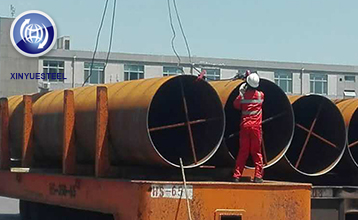It is not easy for coal prices to fall, and continue to fluctuate at a high level next week
Jun. 29, 2021
Last Thursday and Friday (June 24, 25), futures fell and user inquiries decreased. Some traders believed that after July 1st, coal prices would fall; they began to step up shipments, and coal prices stagnated and stabilized. Next week (June 27th-July 4th), at the time of the 100th anniversary of Daqing, ensuring power supply and safety is the top priority. It is expected that the coal market will maintain a high trend of supply and demand; as coal demand improves, port coal prices Will stabilize first, or rise slightly.
With the increase in downstream transportation and purchases, market sentiment has improved; it is expected that next Monday or Tuesday, thermal coal futures and ocean freight are expected to stop falling, which will help the spot rise.
2. In the past one to two weeks, some coal mines have reduced or suspended production, and superimposed safety inspections have become more stringent. As a result, the inventories of power plants and Bohai Rim ports have both decreased, and a certain gap has appeared. This gap is difficult to fill in a short period of time, and its impact on the market is gradually enlarged.
3. The price of coal in some production areas has risen or remained strong, and the price of coal shipped to the port in the market will be reversed, which will affect the enthusiasm of traders to ship to a certain extent, resulting in a decrease in the amount of coal entering the port. After Cao Feidian catches fire coal to clear the port, high-quality coal will once again become tense.

4. Despite the restoration of hydropower and staggered production in the cement industry in some areas, this will ease the tension in the coal market to a certain extent; however, the industrial electricity and air-conditioning and refrigeration loads in coastal areas will increase. It set a new historical high for three times, breaking 200 million kilowatts for the first time, reaching a maximum of 209 million kilowatts. The daily consumption of power plants in the eight coastal provinces is expected to stabilize at 1.9-2 million tons, and the downstream demand for replenishment will still exist.
5. The release of upstream production capacity and the news that coal mines will increase production after the holiday will have a significant impact on the thermal coal futures market; but in the short term, it will help to ease the pressure on the coal market to meet demand. In addition, the news of Australia's coal liberalization is not reliable; without the support of foreign aid, the domestic coal market continues to remain active.
6. Downstream users store less coal. At the beginning of summer, some areas ushered in hot sauna weather, and the daily consumption is still likely to increase; some users began to send more ships to northern ports to grab coal. After the number of anchor ships at Qin Port increased to 55, Huanghua Port anchored ships Climb to more than 60 ships. In the case that Changxie coal is not enough and imported coal is expensive, some users are keeping an eye on market coal; once more users inquire about goods, the increase in port coal prices will be a matter of course.
7. A month ago, there were rumors on the Internet that the higher authorities wanted to limit coal prices in ports, but there is no substantive news at present; imagine that if port price limit measures are really to be implemented, then it may happen again. The phenomenon that "traders do not generate power and power plants do not pull" does not help change the current situation of short supply. It has very limited help in "raising power plant inventories and solving the urgent need for coal." In July, the pressure of power plant replenishment was still not small.



